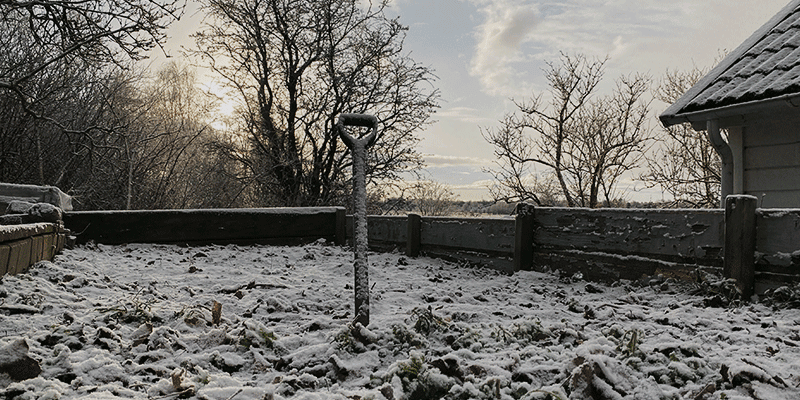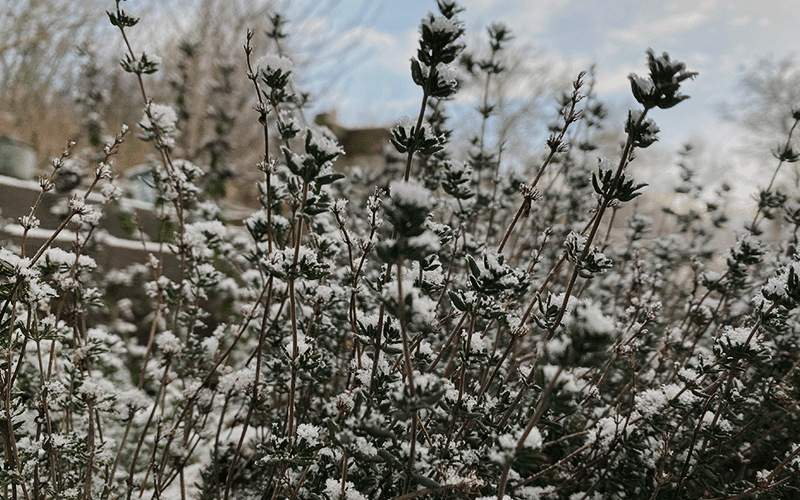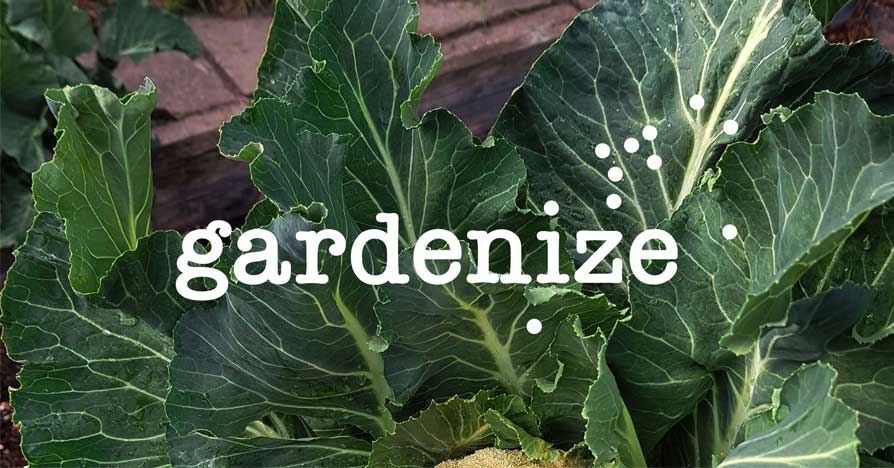What to do in in the garden in January
Holiday season is over, there’s finally time to start thinking about gardening again. Wondering what you should be doing in your garden in January? For our Northern gardeners, the tasks are mostly prepping and planning while thinking of brighter and greener days, while gardening in the southern parts can enjoy cooler working temperatures.
Regardless of if you have frost-damaged plants or pruning dilemmas, there are plenty of gardening activities to do during this cold winter month. Check out the garden to-do list for your region below.

What to do in the garden in January
General tasks:
- Order seeds and spring bulbs.
- Check on your bulbs, tubers and coms in winter storgage. Make sure they are not to try or rotting.
- Prune grapevines, clematis and fruit trees such as apple trees.
- Repurpose your Christmas tree. Use branches as insulation and stems as plant support.
- Cover up and protect tender plants! Extend the season by using cold frames and/or row covers.
- Care for your garden tools. Clean, sharpen and apply lubricating oil to both the wooden handles and most metal blades.
- Build new! If your soil isn’t frozen it’s a great time to build new beds so the soil has time to settle in and be ready to use by spring.
- Plant Chili, Artichoke
- Cool-season vegetables and cool-season annuals south
- Undertake garden chores that haven’t been done due to heat or lack of time
What to grow in the garden in January:
January is a great time to start planning what vegetable varieties to be grown in the garden.
- Zones 8–10: Start your tomato, pepper and eggplant seeds indoors, plant quick growing Broccoli, start your onion seeds indoors and get your spring flowers germinating and ready for spring!
- Zones 3–10: Grow herbs throughout the winter months, such as Basil, Chives, Oregano, Parsley, Thyme. Greens such as lettuce, chard, and arugula can be planted throughout the winter. It is also a great time to plant Asparagus, Artichoke, Carrots, Potatoes and Kale. Delicious root vegetable Winter soup anyone?!
Gardenize app tips
1. Start adding new plantings in the app. Create an event for every new seeding etc. Also have a look at last year’s plantings? When did you plant Chili last year and how did it go? Should you wait or start earlier this year?
2. Started ordering seeds? If not, it’s about time! Remember to take a photo of the seed bag and plant photo online. Sort and save the images together with the plant information, so that you will remember what you bought and when it is time to plant. Create an event in Gardenize and add a reminder.
3. Set reminders when creating watering events for your plants in winter storage. Remember to turn on notifications in your phone to get them. Don’t forget to give the birds outside some water and food too.
Mid-Atlantic (USDA Zone 5-7)
Though outdoor activities are limited here, there are some tasks to do while waiting to get growing again.
- Getting Dark? Put up your winter lights or Christmas decorations this month.
- Feed the birds. Fill your birdbaths with warm water regularly for thirsty birds.
- Protect from the cold! Mulch and use any suiting protection/covers to protect shrubs from frost, ice and heavy snowfalls. Cover any exposed roots with mulch until you can reset the root ball properly in spring. Check regularly on your shallow and delicate roots. especially fall planted perennials.
- Practise pest patrol. Check for spotted Lycorma delicatula egg masses on tree trunks, fences and rocks and all equipment that stays outdoors.
- Prepare your tools. This is a great time to give all of your gardening tools some care. Clean them, remove rust spots, and sharpen the blades and apply some protective coating.
- Get a head start on seeds. It’s the perfect time to sow perennials and woody plants that benefit from cold or alternating temperatures. Sow in pots, then set them in an unheated shed or outdoors. Here is how to grow potatoes in pots
Midwest (USDA Zone 3–6)
Winter is full on in the Modest and cold temperatures is dominating.
- Feed the birds. Fill your birdbaths with warm water regularly for thirsty birds.
- Keep on inspecting trees and shrubs for bark damage.
- Repurpose your Christmas tree. Use branches as isolation and cover newly planted or sensitive plants and protect them from cold, ice, and animals. The trunk and larger branches can be used as plant support later on in the season.
- Order seeds! But before ordering, inventory leftover seeds from previous years. Easy to find if you have created digital inventories in the app. Tips: Create you own seed plan in Gardenize

Northeast (USDA Zone 4–7)
January is here. If snow hasn’t arrived already, then it’s coming soon. So get out your snow shovel.
- Revisit the notes that you took during the past year as well as the pictures you took in order to analyze your garden’s peaks and gaps. Plan for new designs, and make lists of plants that would fill the growing gaps and new possible peaks. Add your tasks in the app
- Order seeds! But before ordering, inventory leftover seeds from previous years. Easy to find if you have created digital inventories in the app. Tips: Create you own seed plan in Gardenize
- Continue to protect tender plants from possible cold snaps by using row covers, cotton blankets and such.
- Stratify saved seeds that needs it
- Check on your winter storage. Look after your stored tubers/bulbs and look out for desiccation or mold. Make adjustments if needed.
Pacific Northwest (USDA zone 7–9)
In the PNW moderate temperature and wet soil awaits.
- Plant! Spring bulbs, new trees and shrubs.
- Order your late spring- and summer-blooming bulbs. Looking for rare varieties? Start your search early, before the limited supples sells out.
- Complete any trimming of perennials
- Prepare your tools. This is a great time to give all of your gardening tools some care. Clean them, remove rust spots, and sharpen the blades and apply some protective coating.

Pacific West Coast (USDA zone 7-11)
The temperature will likely be Moderate enough in the Northern part to work outside on good weather days. Southern gardeners will have more comfortable weather and can be much more active outside.
In Northern California:
- January is the best time to care for roses. Prune, spray, and feed your beloved roses.
- Tree care. It’s time to prune and spray your deciduous fruit trees, such as apple trees.
- Prune perennials and rose bushes.
- Order summer-blooming bulbs, corms, and tubers.
- Continue to protect tender plants from possible cold snaps by using row covers, cotton blankets and such.
In Southern California:
- Divide and replant perennials
- Prune grapevines and rose bushes
- Feed the birds. Fill your birdbaths with warm water regularly for thirsty birds.
- Grow potatoes and. cool season vegetables. Edibles can be grown year-round here.
- Poinsettia for Christmas? Transplant it out in the garden.
- If you do experience occasional nighttime frosts, keep row covers or cotton blankets on hand so that you can protect your crops when needed.
Southwest (USDA zone 4-7)
January brings comfortable daytime temperatures and colder nighttime temperatures.
- Cover up and protect tender plants from cold snaps such as your aloes! Extend the season by using cold frames and/or row covers, cotton blankets and such.
- January is a great month for a garden clean-up.
- Soil improvement.
- Prepare your tools. This is a great time to give all of your gardening tools some care. Clean them, remove rust spots, and sharpen the blades and apply some protective coating.
- Prune rose bushes
- Plant asparagus and towards the end of the month you can direct sow cool-season vegetables, such as carrots and greens.

Southeast (USDA 6–11)
January can come with sudden temperature drops and hard freezes occasionally.
- Continue to protect tender plants from possible cold snaps by using row covers, cotton blankets and such.
- Plant! Spring bulbs, trees and shrubs.
- Harvest winter greens.
- Ordering seeds
- Plan? dream
GARDENIZE GARDEN APP
A gardening friend with a green thumb and photographic memory
Gardenize is an app for gardening and cultivation that helps you to overview, understand and develop your garden and your gardening skills. With an overview it’s easier to succeed and Gardenize structures information and photos and makes it searchable for you. You also get tips and inspiration from other Gardenizers around the world.
Gardenize is free to use with its basic functions and you can download Gardenize from the App Store or Google Play, or create an account the Gardenize web app for web browsers. Get to know Gardenize better here.



